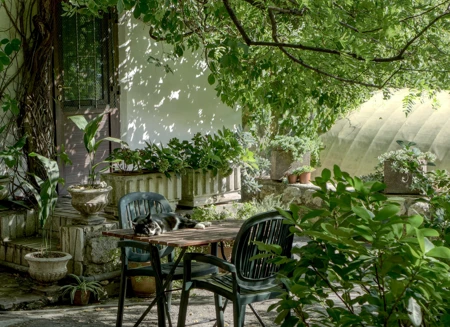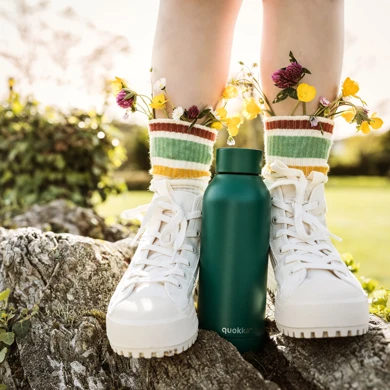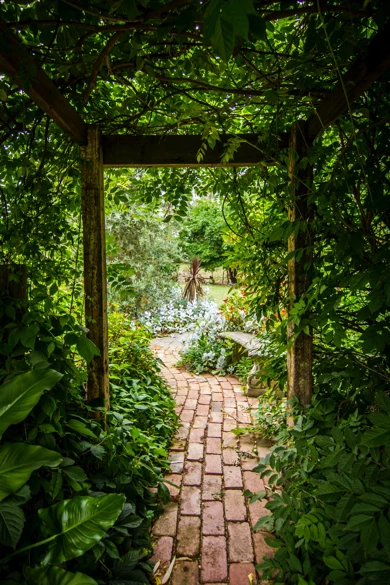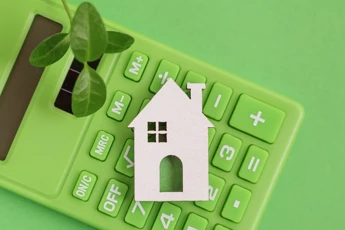There are countless benefits to making your garden ‘greener’, from providing habitats for local wildlife to inhabit, contributing to the fight against climate change by conserving vital resources, and reducing your gardening costs. As well as being extremely rewarding to see the fruits of your efforts come together, enhancing your garden’s appearance can make all the difference if you’re thinking of selling your home, appealing to prospective buyers.
Use less water
A garden needs a lot of water, and hot, dry weather can see you expending up to half of your total water usage to keep your grass and plants quenched.1 Lawns are especially thirsty, and a sprinkler can spray as much water in an hour as a family of four uses in a day.2
The UK Government has said that if we continue to use the amount of water we do now, the amount of water available in England could be reduced by 10 to 15 percent in 2050 - a clear sign that more needs to be done to conserve usage.3
You may be surprised to hear that plants need less water than you think. Try to water thoroughly just once a week with one can per plant, rather than little and often. This encourages the roots to grow down in search of moisture. It means they’ll be stronger and healthier for it, too.
Another option to reduce your own garden water consumption is to use a water butt to collect rainwater. This way, you can water your plants from a watering can, rather than through a hosepipe.
Go wild
Biodiversity plays a crucial role when it comes to creating a more environmentally friendly garden. Your garden doesn’t need to look completely unkempt, but by leaving a section to grow wild and letting nature take its course, you’ll have created a more attractive environment for all things wild to inhabit. It also provides wildlife with additional food sources and pollinators for insects, which in turn reduces the need for any chemical pesticides. Your garden will then become much more resilient in terms of its resistance to pests and diseases.
Plant trees
If you’ve got the space, plant a tree. For a start, they’re brilliant at improving air quality, as they absorb carbon dioxide and release oxygen. To place this in context, a medium-size English oak will store about 500kg of carbon – about the same amount of carbon as one person flying to New York and back.4
Trees are fantastic in terms of how much they contribute to biodiversity, attracting birds by providing them with an additional living space. Their extensive roots can also help to prevent soil erosion, soaking up excess water and preventing it from carrying away any vulnerable topsoil.
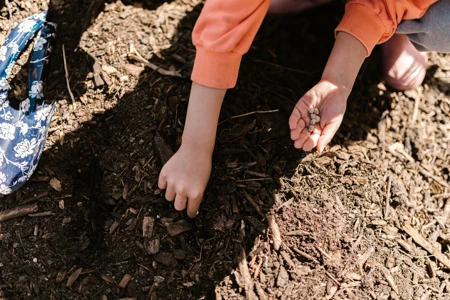
Make mulch, fertiliser, and compost
Don’t let your waste go to waste - chip off fallen branches, bark, hedge, plant, and tree trimmings and use them as mulch on top of the soil. Mulch will reduce the amount of water you need, prevent weeds from growing, and protect plant roots.
You can also pile up grass cuttings, veg waste, shredded newspaper, cardboard, and even vacuum cleaner contents and leave them to decompose. In six months to a year, you’ll have lots of compost to add extra nutrients to your soil and garden.
Making your own compost will also help you to go peat-free. Peatlands are essential to carbon capture, holding more carbon than all the world’s forests combined, which means you’ll be doing your bit in reducing emissions. However, if you aren’t able to make your own compost, be sure to purchase a peat-free version.
You can even make your own fertiliser, too. It’s best to do some research first to work out what you need to help your garden grow, but eggshells, banana skins, coffee grounds, and fireplace ash are all excellent additions.
Grow your own food
Rather than having your tomatoes trucked from Italy and your lettuce shipped in from Spain, why not grow your own to reduce your carbon footprint? Not only will this lessen your food miles, it also cuts out the need for any packaging. Why not give it a go? Even if you’re not green-fingered and don’t have a greenhouse, carrots, and potatoes are fairly easy to grow. Planting apple and cherry trees shouldn’t require too much looking after, either - just a bit of patience!
Make hard choices
Any parts of your garden covered with hard standing, such as paving slabs, brick, and concrete, reduces the opportunity for plants to grow and water to soak into the soil. You may therefore want to consider landscaping a section of this area to make it more sustainable.
While permeable paving is now a planning requirement for new driveways, this doesn’t mean you have to dig up your existing one. The RHS has calculated that if 30 million gardeners pulled up a paving slab and planted 1m2 of perennials (depending on the type of plants), the carbon stored would equate to the amount of heating used by up to one million homes for a year.5
When designing areas with hard standing or landscaping, there are plenty of sustainable materials like FSC timber, recycled aggregate paving, and recycled hardwearing plastics that you can use. Reclamation yards are also great for finding discarded building materials for raised beds, fences, and borders.
Pot nots
Did you know that the black plastic pots that plants come in are almost always non-recyclable? As they often end up in landfills, try and reuse them as many times as you can, or ask your local garden centre if they offer recyclable wrapping paper as an alternative.
When you’re sowing seeds or young plants, you could use egg boxes and the cardboard inner tube of toilet rolls. If you plant them in the ground, they will biodegrade over time, too.
Go one step further with a green mortgage
Seeing as you’ve been thinking about improving the eco-benefits of your garden, you may also want to do the same for your home.
If you’re able to improve the energy efficiency rating of your property, you may be eligible for a green mortgage. This type of mortgage rewards you for buying or owning an energy-efficient home, and you may even be eligible if you make energy-efficient improvements and renovations. It could also reward you with a cheaper mortgage rate, or even give you cashback when buying or remortgaging a home with a high EPC rating.
The Government is making a push to make homes more green, and is expecting all properties in the UK to have an Energy Performance Certificate (EPC) rating of at least ‘C’ by 2035 (2028 for landlords). With this in mind, if you want to be eligible for a green mortgage product, your home will need an EPC rating of ‘A’ or ‘B’.
Whilst making your garden greener may not necessarily make you eligible for a green mortgage, if done right, it will save you money, allow you to do your bit for the environment, and reward you with a glorious garden packed full of plants and wildlife.
To discuss whether a green mortgage is right for you, get in touch with one of our advisers, who will be more than happy to help.
1 NI Direct, 2022
2 RHS, 2023
3 Gov.uk, 2023
4 Imperial, 2020
5 The Telegraph, 2021
Ready for some advice? - arrange a call back
Related Articles
What is a green home?
Green homes aim to make a positive difference to the climate change battle, and could even open the door to things like green mortgages.
< 40 views | 2 years ago
Green landscaping for sustainability
How would you go about transforming your garden into an eco-friendly oasis? We often talk about sustainability in the home, but there are plenty of steps you can take in your garden too.
< 30 views | 2 years ago
What’s a green mortgage?
A green mortgage is a new incentive designed to encourage homebuyers to think of the environmental impact of their homes. And while there’s a lot of information out there, not enough people are talking about green mortgages.
< 50 views | 2 years ago
No posts currently available
Important information
Your home may be repossessed if you do not keep up repayments on your mortgage.
There may be a fee for mortgage advice. The actual amount you pay will depend on your circumstances. The fee is up to 1% but a typical fee is 0.3% of the amount borrowed.

